
Deep Maps and Spatial Narratives
Edited by David J Bodenhamer, John Corrigan and Trevor M Harris, Editors
Deep Maps and Spatial Narratives, was published in February 2015 and investigates deep mapping and the spatial narratives that stem from it. A deep map is a detailed, multimedia depiction of a place and all that exists within it. Where traditional maps serve as statements, deep maps serve as conversations [more about Deep Maps and Spatial Narratives]. The authors in this book come from a variety of disciplines: history, religious studies, geography and GIS, and computer science. Each uses deep mapping to explore the complex problems of society and culture by making use of a new creative space that is visual, structurally open, multimedia, and multi-layered.
Hardback $85; Paperback $30; EBook $9.99

The Spatial Humanities
Edited by David J. Bodenhamer, John Corrigan and Trevor M. Harris
Geographic information systems (GIS) have spurred a renewed interest in the influence of geographical space on human behavior and cultural development. Ideally GIS enables humanities scholars to discover relationships of memory, artifact, and experience that exist in a particular place and across time. Although successfully used by other disciplines, efforts by humanists to apply GIS and the spatial analytic method in their studies have been limited and halting. The Spatial Humanities aims to re-orient—and perhaps revolutionize—humanities scholarship by critically engaging the technology and specifically directing it to the subject matter of the humanities. To this end, the contributors explore the potential of spatial methods such as text-based geographical analysis, multimedia GIS, animated maps, deep contingency, deep mapping, and the geo-spatial semantic web.
Paperback $24,95; EBook $9.99
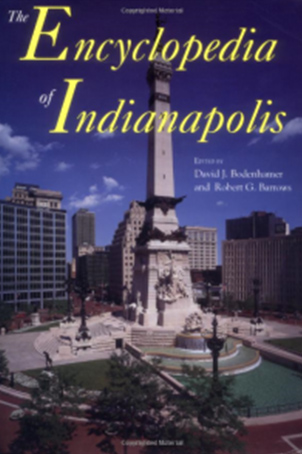
The Encyclopedia of Indianapolis
Edited by David J. Bodenhamer and Robert G. Barrows
In 1994, we published a 1,600-page encyclopedia that provides a comprehensive social, cultural, economic, historical, political, and physical description of Indianapolis. This work—the standard reference volume for information about the city—provides photographs, an abbreviated timeline, a statistical abstract, and interpretive essays. Featuring the work of 485 community and academic experts and hailed as a national model for urban encyclopedias, it also includes information on the 8 counties that comprise the Indianapolis Metropolitan Area.
Available for purchase through a number of different sources including Amazon and Google Books.
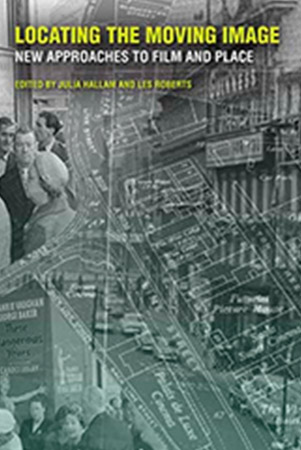
Locating the Moving Image
Edited by Julia Hallam and Les Roberts
Leading scholars in the interdisciplinary field of geospatial visual studies examine the social experience of cinema and the different ways in which film production developed as a commercial enterprise, as a leisure activity, and as modes of expression and communication. Their research charts new pathways in mapping the relationship between film production and local film practices, theatrical exhibition circuits and cinema going, creating new forms of spatial anthropology. Topics include cinematic practices in rural and urban communities, development of cinema by amateur filmmakers, and use of GIS in mapping the spatial development of film production and cinema going as social practices.
Hardback $85; Paperback $32; EBook $9.99
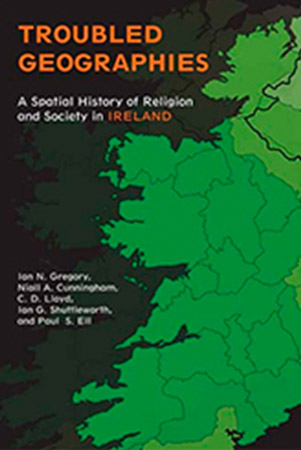
Troubled Geographies
By Ian N. Gregory, Niall A. Cunningham, Paul S. Ell, Christopher D. Lloyd and Ian G. Shuttleworth
Ireland’s landscape is marked by fault lines of religious, ethnic, and political identity that have shaped its troubled history. Troubled Geographies maps this history by detailing the patterns of change in Ireland from 16th century attempts to “plant” areas of Ireland with loyal English Protestants to defend against threats posed by indigenous Catholics, through the violence of the latter part of the 20th century and the rise of the “Celtic Tiger.” The book is concerned with how a geography laid down in the 16th and 17th centuries led to an amalgam based on religious belief, ethnic/national identity, and political conviction that continues to shape the geographies of modern Ireland. Troubled Geographies shows how changes in religious affiliation, identity, and territoriality have impacted Irish society during this period. It explores the response of society in general and religion in particular to major cultural shocks such as the Famine and to long term processes such as urbanization.
Paperback $45; Ebook $9.99

Rising Expectations: Urban Congregations, Welfare Reform, and Civic Life
By Arthur E. Farnsley II
Rising Expectations examines the factors crucial to the success or failure of faith-based partnerships, by analyzing faith-based projects initiated in Indianapolis. Civic leaders are calling for a new role for faith-based groups, especially congregations, in public life—in building social capital, delivering social services, and spearheading community development. Partnerships among government, foundations, and the faith-community are innovative, and many appear to offer promise. However, many factors are crucial to the success or failure of these partnerships. Rising Expectations challenges many of the assumptions on which these reforms are based and offers a realistic assessment of what congregations can and cannot reasonably be expected to do.
Hardcover from $10.90

Souls of the City: Metropolitan Growth and Religious Change in Postwar Indianapolis
By Etan Diamond
Souls of the City will analyze how Indianapolis congregations were shaped by the physical and social mobility that characterized the post-war metropolis. Indianapolis’s transformation from a small city in an otherwise rural county to a complex metropolis occurred precisely at the time that its religious landscape was transformed—from having a predominant mainline Protestant core to a more complex, multi-denominational congregational blend. How these trends were intertwined—and what that intertwining says about the nature of community life in the contemporary metropolis—will be explored in Souls of the City.
EBook $28.00

Sacred Circles, Public Squares: The Multicentering of American Religion
By Arthur E. Farnsley II; N.J. Demerath III; Etan Diamond; Mary L. Mapes; Elfriede Wedam
This study of the religious landscape of Indianapolis—the summative volume of the Lilly Endowment’s Project on Religion and Urban Culture conducted by the Polis Center at IUPUI—aims to understand religion’s changing role in public life. The book examines the shaping of religious traditions by the changing city. It sheds light on issues such as social capital and faith-based welfare reform and explores the countervailing pressures of “decentering”—the creation of multiple (sub)urban centers—and civil religion’s role in binding these centers into one metropolis.
Hardcover $45.00; EBook $36.00
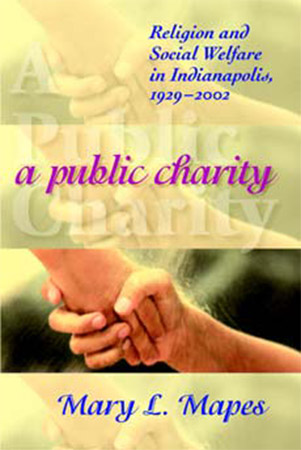
A Public Charity: Religion and Social Welfare in Indianapolis, 1929-2002
By Mary L. Mapes
Using Indianapolis as its focus, this book explores the relationship between religion and social welfare. Arising out of the Indianapolis Polis Center’s Lilly-sponsored study of religion and urban culture, the book looks at three issues: the role of religious social services within Indianapolis’s larger social welfare support system, both public and private; the evolution of the relationship between public and private welfare sectors; and how ideas about citizenship mediated the delivery of social services. Noting that religious nonprofits do not figure prominently in most studies of welfare, Mapes explores the historical roots of the relationship between religiously affiliated social welfare and public agencies. Her approach recognizes that local variation has been a defining feature of American social welfare. A Public Charity aims to illuminate local trends and to relate the situation in Indianapolis to national trends and events.
EBook $30.00

Falling Toward Grace: Images of Religion and Culture from the Heartland
Edited by J. Kent Calder & Susan Neville, Photography edited by Kim Charles Ferrill
The more mobile and rootless and virtual we become as a culture, the more we long for vital connections to the places in which we find ourselves. Our restless and unruly souls seek connections with our communities and our environment, connections that technology and commerce have all but obliterated. While we suffer from no lack of prospective guides offering to lead us in our search for answers, discerning truth and recognizing charlatans in this realm is not easy. The editors of this volume asked a distinguished group of Indiana writers and photographers to grapple with the issues of place and spirit. They focused their work on the connections, or lack thereof, between the seen and the unseen in Indianapolis–long considered a typical American city. The insights they offer are as varied as the backgrounds and perspectives represented in their essays, poems,and photographs, but they reflect an honest attempt to reach beyond the mundane and the superficial and to deal directly with the spirituality of one American city at the end of the twentieth century.
Hardcover from $10.46
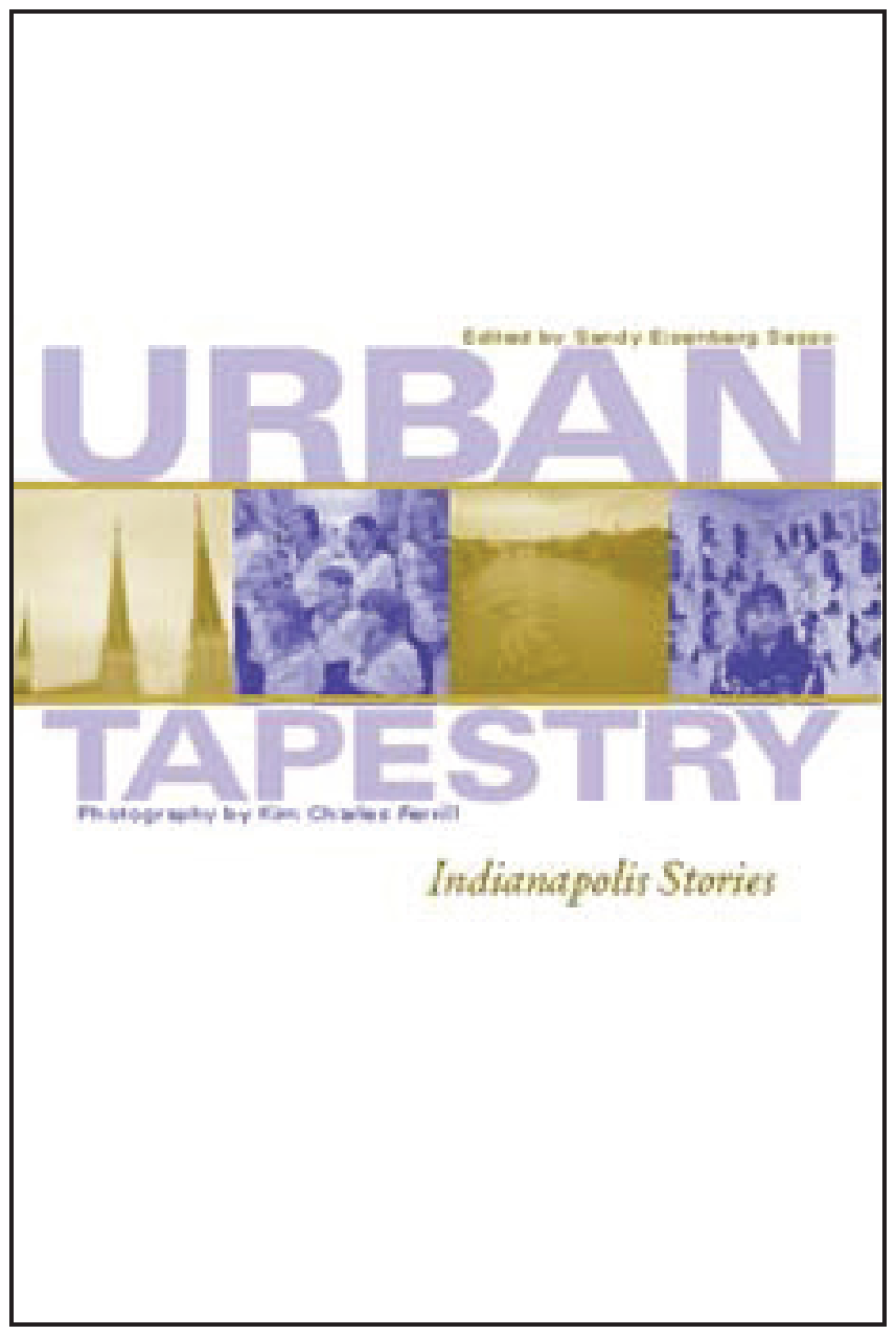
Urban Tapestry
Edited by Sandy Eisenberg Sasso, Photography by Kim Charles Ferrill
The Polis Center is working with a diverse group of citizens to develop Urban Tapestry, a book of stories and photographs. We are interested in stories that help define the life of the city of Indianapolis, its triumphs and failures. Indianapolis is often viewed as homogenous and conservative; yet racial conflict, ethnic diversity, economic disparity, technological change, and progressive political and religious groups are an integral part of our urban landscape. We hope this collection of personal narratives will reflect the soul that animates this city. As well as publishing the book, we hope to create forums, at public libraries and other gathering places, where individuals can come to hear each other’s stories.
EBook $11.95
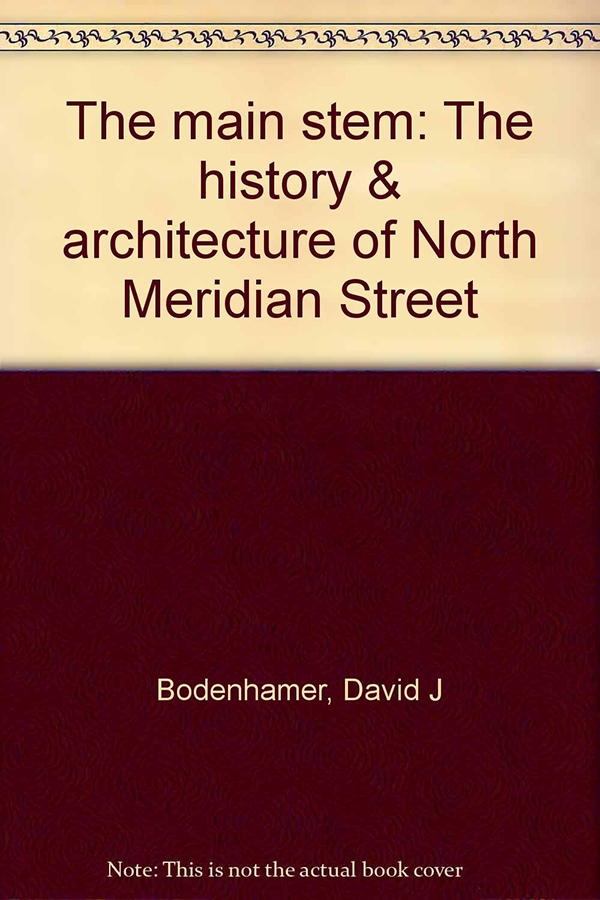
The Main Stem: The history and architecture of North Meridian Street
David J. Bodenhamer (Author), Lamont Hulse (Author), Elizabeth B. Monroe (Author), Marsh Davis (Photographer)
This book offers an extensive review of both the history and architecture of the North Meridian Street corridor in Indianapolis. It contains histories and both full color and black and white (plus some vintage photos) of nearly every structure with detailed maps of the entire historic district. The chapter on decorating trends might be of use to any Indiana homeowner with a 1920’s era home.
Hardcover from $325.00
Voices of Faith: Making a Difference in Urban Neighborhoods
Introduction by David J. Bodenhamer, Photography by Kim Charles Ferrill
“Big Red the Wrestling Preacher” ministers to one of the poorer neighborhoods in Indianapolis. “A young man comes to me cold and I put a coat on his back. He comes to me hungry and I feed him. He can’t read and I find him a tutor. That’s hope. That’s empowerment.” Big Red’s is one of 26 voices in Voices of Faith: Making a Difference in Urban Neighborhoods. The book profiles ordinary people, professional and volunteer, whose service to their communities grows out of religious faith. Featuring striking portrait photography, Voices of Faith is published by The Polis Center as part of its Project on Religion and Urban Culture.
Paperback $19.95
“See You in Church?” Religion and Culture in Urban America
By Jan Shipps, Foreword by David J. Bodenhamer
The largest American cities, such as New York, Chicago, Los Angeles, Dallas, and Atlanta are obviously important, and quite visible. They are however atypical, in that the greater proportion of the nation’s residents live in cities that may be classified as “mid-sized.” This is a broad but useful category embracing metropolitan areas ranging from large towns to cities such as Indianapolis. Their manageable size and representative nature make them more amenable sites for the study of urban culture, and particularly the study of religion. This comparative volume of religion in five mid-sized American cities is being completed for future publication. Publishing information is not yet available, but the book’s prospectus is available here.
Developing and Sustaining a Community Information System
Bodenhamer, D.J., J. Colbert, J, K.F. Comer, and S.M. Kandris
Incorporating Geospatial Capacity Within Clinical Data Systems to Address Social Determinants of Health
Comer, K.F., S. Grannis, B. Dixon, D. Bodenhamer, and S. Wiehe
Examining Urban environment correlates of childhood physical activity and walkability perception with GIS and remote sensing
Gilbert C. Liu, James Taylor Colbert, Jeffrey S. Wilson, Ikuho Yamada, and Shawn C. Hoch

